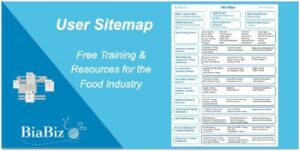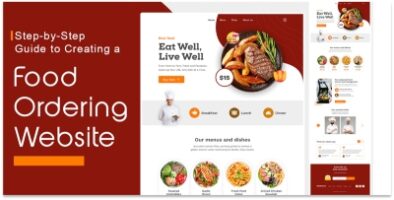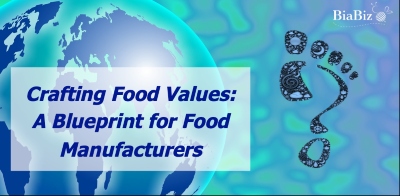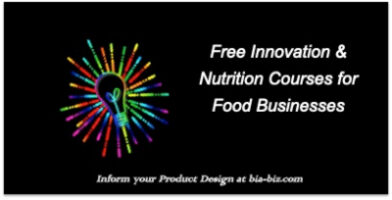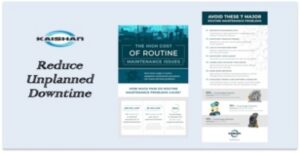Preparing A Food Safety Management System For An ISO Audit in Food Service (Guest Blog)
Food safety management is a critical task that any food-related business should undertake. HACCP (Hazard Analysis Critical Control Points) principles address most of the issues that may arise during food management practices. For example, this framework covers the legal, physical, biological, and chemical risks that may affect food safety within your establishment. To ensure compliance with HACCP, your business needs to establish critical functions that align food management systems with best practices within the industry. This includes proper communication, input by management, and personal responsibility among all employees. But even with the most appropriate workflows in place, you still need to test your system against a globally recognized benchmark.
ISO 22000 covers food management systems in an attempt to establish global quality standards. These guidelines encompass safety, quality management, and process efficiency across multiple sectors of the food industry. At its core, ISO 22000 combines ISO 9001 with HACCP principles to advance safety and efficiency in food management. And by preparing these systems for an ISO audit, your business will remain compliant with applicable food safety requirements, sanitation standards, and leadership protocols.
The Basics Of Food Safety Management Systems
The primary purpose of a food management system is to ensure safety, sanitation, and efficiency during daily operations. Meeting these requirements is a company-wide effort where employees need to be involved during the implementation of your food service workflows. Depending on the size of your company, types of customers you serve, and the nature of operations, your food management system will have unique requirements. For example, businesses handling hot and ready-to-serve food may face a broader range of risks than companies that only sell prepackaged items.
After assessing your environment, you should develop a plan for meeting appropriate food service standards. It begins with identifying safety policies, objectives, and procedures that make compliance easier. You may also need to allocate resources, hire qualified personnel, and invest in safety equipment that helps mitigate risks that you may face during daily operations.
For your food management system to be effective, senior management should play an active role during the development process. This is because the management team approves resource allocation, sets the tone for employee expectations, and establishes benchmarks for assessing food safety standards. Senior management can also use their experience and expertise in HACCP to guide various teams on proper food management practices.
Your system should also include a robust documentation process. Detailed, timely, and accurate documents serve as evidence of compliance with ISO 22000 standards. They can be used as resources that guide new and experienced employees in adhering to best practices during food preparation. And if a risk occurs (such as food poisoning or sanitation issues), these documents serve as an evidence trail to work your way backward and identify any loose ends within the food management system.
Finally, proper communication and training (of personnel) will be necessary to bring your system to life. Communication ensures that any issues are addressed and resolved in good time. You can also create an effective feedback loop that allows you to implement changes or improvements along the way. Training equips your employees with the skills necessary to meet compliance guidelines.
Understanding ISO 22000 And Its Applications To Food Management Systems
ISO 22000 is a food management system that demonstrates compliance with globally recognized practices. This certification applies to the food preparation and service chain, from the farm to the dinner table. Establishing ISO 22000 compliance allows your business to develop customer confidence/loyalty while promoting high standards of food safety. Compliant companies also demonstrate their ability to maintain credible and transparent food service operations.
Maintaining an ISO 22000 compliant environment is a continuous process. Not only do you need to meet the core principles of HACCP, but you should also establish compliance with environmental and sanitation guidelines, risk management practices, and global regulations. Many individual tasks/practices are included in ISO 22000. However, the core requirements of this ISO framework can be grouped into three broad categories:
- Establishing prerequisite programs that reduce the likelihood of food contamination
- Compliance with HACCP guidelines to control biological and chemical risks that interfere with food preparation
- Developing a robust food safety management system for monitoring all aspects of food preparation
As part of your food management system, ISO standards require the following best practices to ensure continuous compliance:
- Having systems in place for tracing and identifying various products
- Developing an emergency plan for responding to various types of risk
- Setting clearly defined objectives that make compliance easier
- Implementing protocols for measuring and monitoring devices
- Having an internal audit process for assessing compliance in real-time.
With the above steps in place, your food management systems will be ready for ISO 22000 audits. Furthermore, you’ll be able to maintain a continuously compliant environment that minimizes food risks, establishes customer confidence, and improves the credibility of your daily operations.
This blog is brought to you by the team at Reciprocity who has been working with ISO compliance since they were founded in 2009. The International Organization for Standardization (ISO) has more than 22,000 standards, so Recopricity created a Compliance dashboard to help you calmly view the standards for your industry. Food Manufacturers today face regulatory compliance requirements and operational risks from multiple directions. Modern manufacturing also relies heavily on subcontractors and other outsiders, which drives up the need for — and also complicates — risk assessment and monitoring of third parties. Governance Risk & Compliance Software Solutions encourage compliance, risk, and audit managers to act more nimbly and stand toe-to-toe with the fast paced world of business.
Additional Resources:
Food Safety & Microbiology training & Resources

